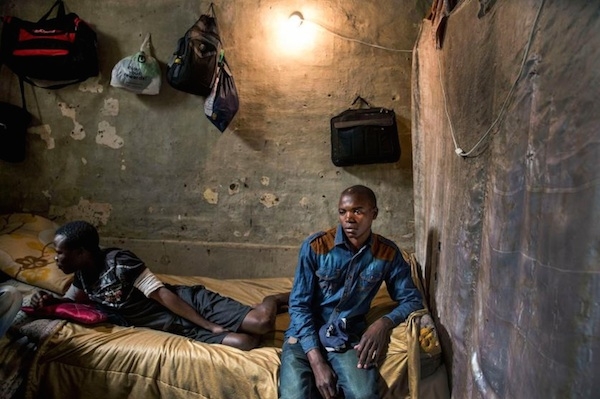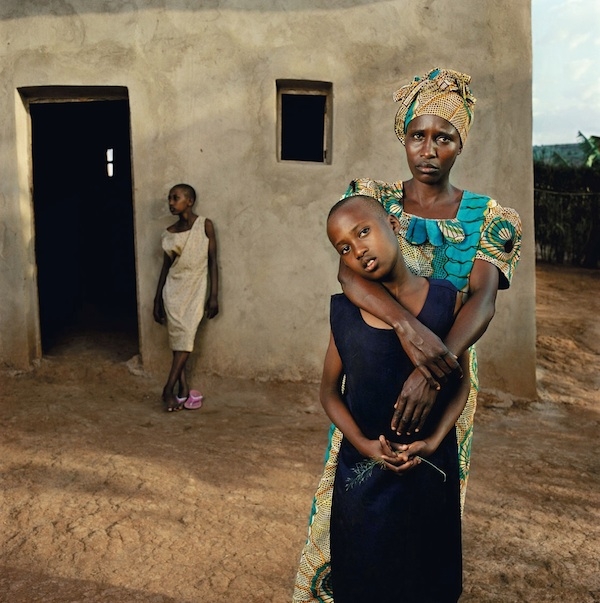Photographer Profile - Jonathan Torgovnik: "I've never seen such conditions of poverty"

|
|
|
Jonathan Torgovnik never knew for sure how long he would be able to photograph inside the wretched hijacked high-rises of downtown Johannesburg, South Africa.
The buildings, abandoned by their white owners following the end of apartheid, had been occupied by migrants from a number of African countries. They were squalid places: Most of the buildings lacked electricity and running water, and Torgovnik’s pictures show mountains of garbage, a hopeless world of filth. The veteran photojournalist and documentary photographer says he is “still in shock” by what he saw.
“I’ve been to many countries in my career — poor areas, slums in Asia, Africa and South America, and I’ve never seen such conditions of poverty,” he says. “The quantity trash is mind boggling, and with it comes sanitation issues and diseases. There are rats everywhere.”
The buildings held other dangers for outsiders. Torgovnik worked with a “fixer” — a former resident of the buildings he’d met through a legal-aid group called SERI, or Social Economic Rights Institute of South Africa. “Sometimes I would be there for two hours, sometimes for five minutes, sometimes for half a day, depending of the level of tension.” he says. “One building was worse than the others — there were gangs and a lot of drugs.”
One day, minutes after arriving, the fixer said they had to leave immediately. “He’d heard people talking about my equipment,” says Torgovnik, who began photographing the buildings and their residents in 2015, after driving through the area and seeing heaps of refuse and shuttered windows, with smoke from cooking fires pouring from behind the shutters.
Torgovnik moved to South Africa in 2011, after being based in New York for 19 years and working as a contract photographer for Newsweek magazine and as a freelancer repped by Reportage by Getty Images. During that time he also undertook several in-depth personal projects, including a series about the impact of cinema on Indian culture that was collected in the 2003 book Bollywood Dreams. Another, more harrowing project focused on the aftermath of the Rwandan Genocide of 1994. The work resulted in the 2009 Aperture book Intended Consequences: Rwanda Children Born of Rape.
“I’ve alway looked for personal projects—something that I care about and that I can do on my own time and not be pressured by deadlines,” he says.
It was that impulse that drew him into the buildings in Johannesburg. As the world’s media focused on the million migrants from the Middle East and Africa making their way to Europe, Torgovnik began taking notice of a different story — migrants from Zimbabwe, Zambia, Malawi, Tanzania and Kenya who were coming to South Africa. “We’re talking about major numbers — it’s estimated that there are two million African migrants in South Africa,” he says.
 Adam, an immigrant from Zambia
Adam, an immigrant from Zambia
The buildings in Johannesburg were emblematic of that migration story and the humanity behind the numbers. “The majority of people I met there were trying to find a better life or hoping for jobs to send to their families. Seeing the terrible, inhumane conditions they were living in was really sad. Their dreams were completely shattered,” he says.
By getting into the buildings, Torgovnik
was able to bring an intimate perspective to a story
no one else had seen, and that he would not have known about had he not resettled in South Africa.
A Good Gamble
“It turned out to be quite a good gamble, and a good change,” Torgovnik says of his move five years ago.
At the time, he was wrapping up his emotionally draining project in Rwanda, shuttling between New York and Africa, while also assessing the changing photojournalism business.
“I loved New York and felt comfortable there. But I saw an advantage in being based somewhere else,” he says. “The way the industry was evolving, there were fewer assignments for photojournalists and documentary photographers, and fewer publications that had the budgets to send photographers out from Paris or New York.” Instead, he says, magazines were looking for photographers who were already in place.
 From
Torgovnik's Rwanda project
From
Torgovnik's Rwanda project
Coincidentally, Torgovnik learned that Getty Images was in need of a photographer based in South Africa. “One photographer who had been there had shifted to another region, and another photographer based in South Africa had left the agency. So I said, ‘You know what, I’ll give it a shot.’”
After living in Cape Town for a year and a half, Torgovnik relocated to grittier Johannesburg. “Cape Town felt like a holiday-type place, and I wanted to be in a place where I felt like I was really in Africa,” he says. “Johannesburg is interesting—it’s not the safest place to be. People live in houses with fences and electric alarms.”
The move to South Africa in effect transformed Torgovnik from a global generalist to a Sub-Saharan specialist. “There is something to be said for focusing on particular region,” he says. “You know a little more about that place — not just the politics, but also how to get by, how to get visas—there is a lot of red tape to get things done in Africa. Knowing the system is an advantage.”
The Importance of Personal Work
After moving to Johannesburg, Torgovnik began looking around for a personal project to work on. “At first, I didn’t connect with anything. To do these projects, I need to find something I can connect with emotionally — something that comes from the inside,” he says.
That was the case when he started his breakthrough project on Bollywood. Originally from Israel, Torgovnik had seen what a powerful cultural force cinema was in India during a backpacking trip he made there before moving to New York to study photography at the School of Visual Arts. In 1996 he won a $2,000 award from Kodak at the Eddie Adams Workshop and decided to use it to go back to India.
 From "Bollywood Dreams"
From "Bollywood Dreams"
“Early on in my career, I realized that what people really connect to and see in you is your personal work and your approach to personal work — the attention you give to it and the depth you go into it,” he says. “The Bollywood project took about five years to complete, and by the time I finished it, I was able to secure a book deal with Phaidon Press, which really helped get my career going.”
He is just now beginning to publish his work on the migrants in Johannesburg. The project was spotlighted recently by Time magazine’s LightBox blog, where Torgovnik detailed what the lives of people in the abandoned buildings are like, and the odds they are up against. “There’s been a lot of xenophobia and violence in South Africa in recent years,” Torgovnik said in an interview. With South Africa’s own economy struggling, he notes, the migrants are seen as taking away jobs.
“I don’t think the world understands the scope of the migration that’s been going on in this region,” Torgovnik says. “I’m hoping this work shows another side to the migration issue.”



